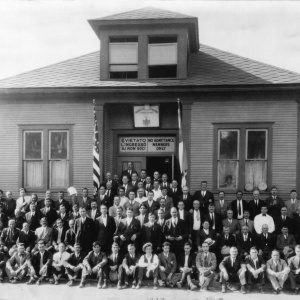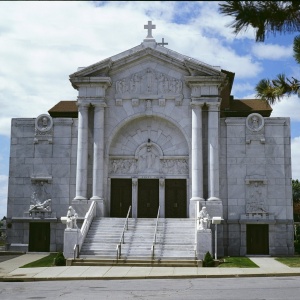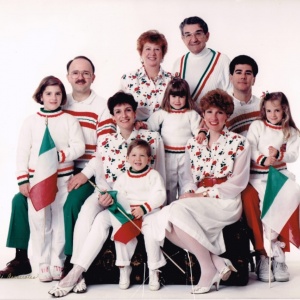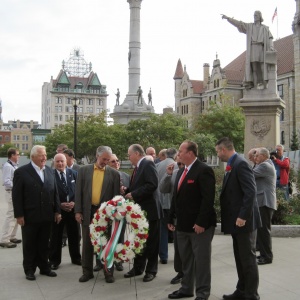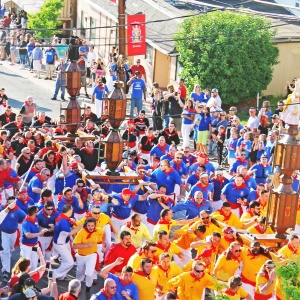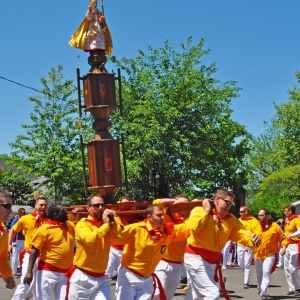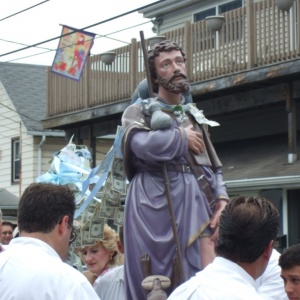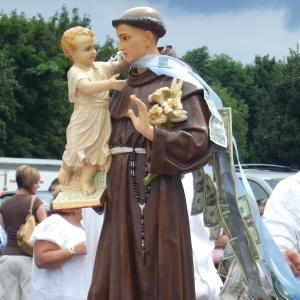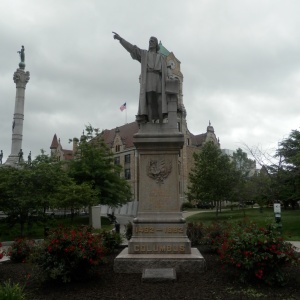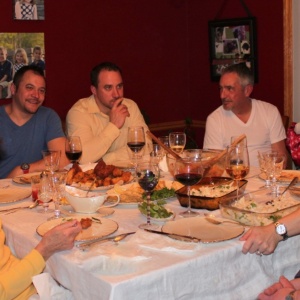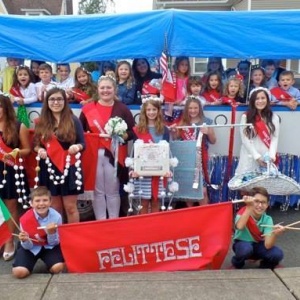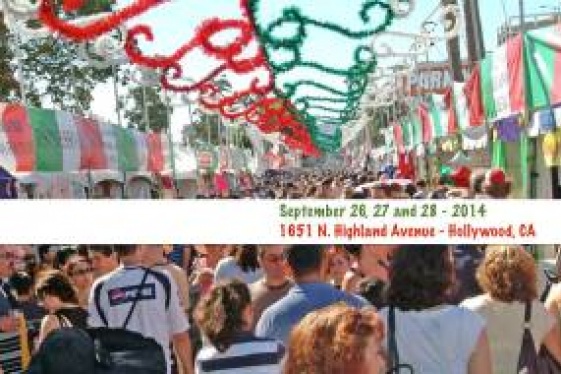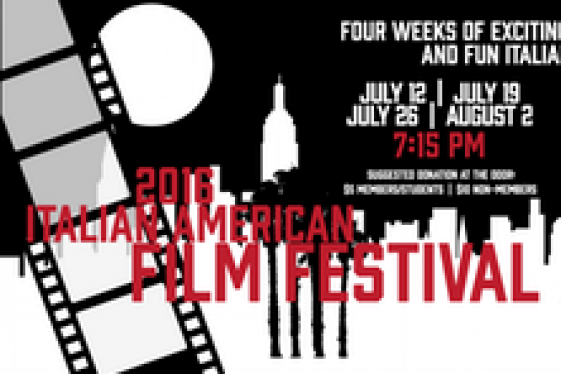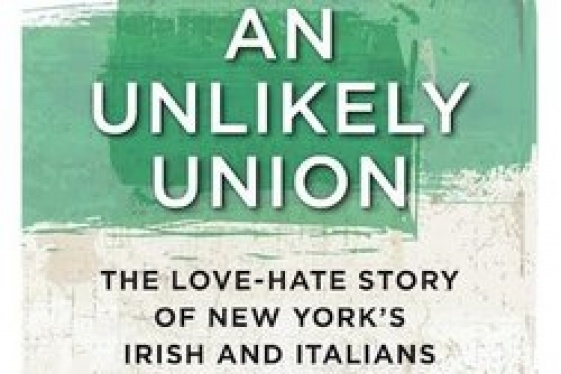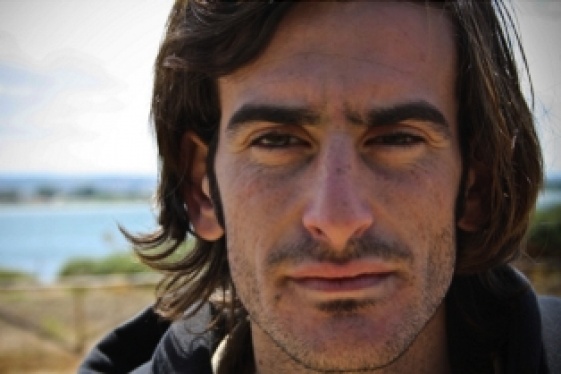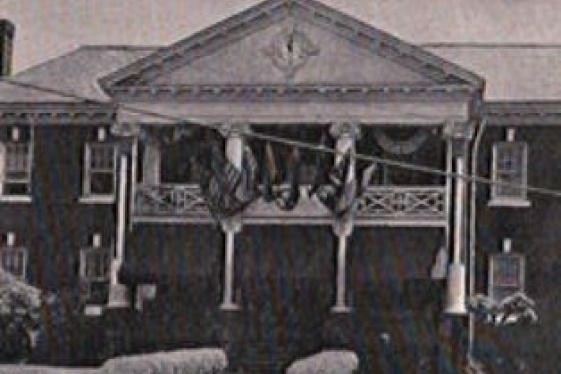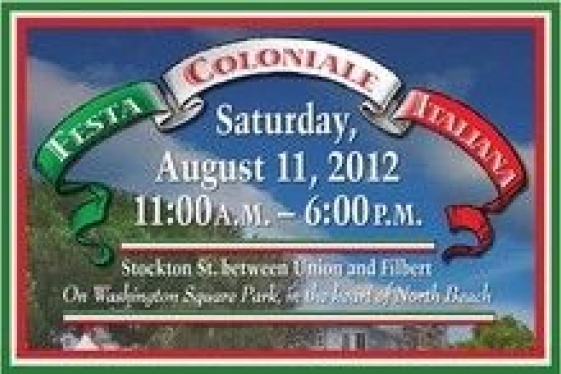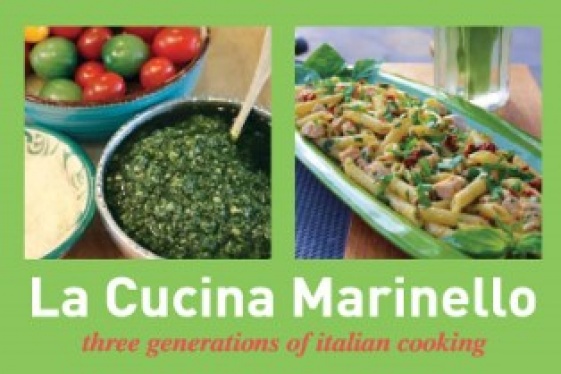
Stephanie Longo (Author of the book "Italians of Lackawanna County")
Gli italiani della contea di Lackawanna in Pennsylvania: una meravigliosa comunità dove tutti si amano e si rispettano

Following the traces of the Italian emigration to the US, we discovered that many fellow Italians went to Lackawanna County, in Pennsylvania. The Keystone State is home to more than 1,5 million Italian Americans, according to the 2010 census bureau: the 12,2% of the entire population of the State.
Starting today, March 12, a new book will be available in bookstores and online. It is called “Italians of Lackawanna County”: a very interesting description of our fellow Italians in this important Pennsylvania County. The author is a dear friend of We the Italians: she has a very big heart, a huge pride for being Italian, and a passion of everything Italian. For this new interview, we thank and welcome Stephanie Longo
Lackawanna County, PA, boasts one of the largest Italian American populations in the US. Please, Stephanie, tell our readers a bit more about the story of the emigration to this area of so many Italians
Lackawanna County is Pennsylvania’s youngest county - it was formed in 1878. It definitely one of the hidden treasures of Italian ethnicity in the United States. We have many ethnic areas in our county; we are known for being very ethnically diverse, and that continues to today with our population as we readily embrace other cultures. The amazing thing about Lackawanna County itself is that the early immigrants always maintained their ties to their homeland. For example, Scranton hosts one of the largest Saint Patrick’s Day parades in the nation - that’s incredible for a city that has a population of about 80,000 people. Scranton is also the seat of the Polish National Catholic Church. As I said, it’s a very ethnically diverse area.
One thing I mention in “Italians of Lackawanna County” is that it is not uncommon to see the ethnicities dipping into each other. For us Italians it’s pretty fascinating, because every Italian town pretty much follows the county’s coal veins, which makes sense because people came to our region to work in the mines. Our Italian towns range from Carbondale to Jessup to Dunmore and Old Forge. Jessup is the sister city of Gubbio in Italy and is one of the region’s most ethnic enclaves. The citizens of Jessup take a lot of pride in how close their ties are with Italy. In my hometown of Dunmore, we have a strong population of people, like myself, who descend from immigrants who arrived from Guardia dei Lombardi, Italy. We also have a large population from San Cataldo, Sicily, that lives in Dunmore. The City of Scranton has a variety of ethnic enclaves, but in terms of Italian ethnicity, its West Side neighborhood is the home of St. Lucy’s Parish, which is the first Italian Catholic Church in Lackawanna County. You also have Old Forge with its wonderful population of people from Felitto, Campania.
Tell us about the Italian American community in Lackawanna County: who are they, and how are they organized?
Our Italian American communities are just as interesting as the towns themselves. You can’t compare Jessup and Dunmore, for example, because it would be akin to comparing apples and oranges. However, both towns are similar in that they stick to the traditions of where their families came from. The beauty of this region is that we are all willing to discover everybody else’s background. Even though we might have origins from different parts of Italy, we all share a common bond in our heritage. The term “campanilismo,” that is so popular in Italy doesn’t really exist in Lackawanna County.
I’ll be the first one to say, “I’m from Dunmore.” But I would be more than willing to go up to Jessup and participate in their Saint Ubaldo festivities, and I know my friends from Jessup are more than willing to come down to Dunmore and see how we celebrate our Italian heritage. I have friends from Old Forge who actually participate in La Corsa dei Ceri in Jessup. Being an Italian American from this region is a wonderful experience because everybody is very united and everybody is just very proud of where they come from. Sometimes we might tease each other, but it’s always in good fun. We all share a common love and pride for our heritage.
What are the main events organized in your area celebrating Italy? Is there a Columbus Day Parade?
The Columbus Day Association of Lackawanna County lays a wreath at the statue of Christopher Columbus on Scranton’s Courthouse Square. That statue was actually sculpted in the yard of Frank Carlucci, who was responsible for the creation of the grand staircase at Ellis Island. Legend has it that his front yard in Scranton served as the studio for the creation of the statue, so you would see the arms and legs of the statue being formed. Every time I pass where Mr. Carlucci lived, I think about this story and it amazes me to think that his front yard was his studio.
We actually have an entire summer of Italian festivals that start with Memorial Day weekend and end the weekend after Labor Day. The summer really kicks off with La Corsa dei Ceri in Jessup. That festival is one of the area’s largest and most traditional celebrations. If you look at the cover of “Italians of Lackawanna County,” the photo is of the statue of St. George being carried in La Corsa dei Ceri. It’s a very beautiful thing to see in person. A group of people from Gubbio comes over each year to witness La Corsa dei Ceri in Jessup, and a group of people from Jessup travels to Gubbio to participate in their event as well.
There’s another festival in Scranton called La Madonna della Buda, and that’s traditionally held over Father’s Day weekend. It is in honor of people from a town called Saint Mango d’Aquino in Calabria. Then, in mid-July, Carbondale hosts their festival in honor of Our Lady of Mount Carmel and part of it includes a parade where they take the statue of Our Lady of Mount Carmel though the streets of the city, and people can pin money to her sash to ask for her blessing. At the end of the procession, the men actually go back to prepare, while the women are the ones who bring Our Lady of Mount Carmel back to the church.
Then, right after that, the festival in honor of Saint Rocco, who is the patron saint of the town of Guardia dei Lombardi, takes place in August. Once again, it is very traditional. It’s an interesting festival, too, because before Dunmore’s parishes of Saint Anthony and Saint Rocco were united during a diocesan restructuring, the procession only had the Blessed Virgin Mary, Saint Rocco, and Saint Joseph. When Saint Anthony joined the procession, it made it into a carbon copy of what takes place over in Guardia.
Over Labor Day weekend is La Festa Italiana, which is Lackawanna County’s largest Italian festival. It is held on Courthouse Square in downtown Scranton. This festival is great because it doesn’t just have Italian food—some food vendors sell other ethnic or American treats. It is a good time for all. Thousands of people attend this event. It was originally held over Columbus Day weekend in October, but was moved because of the area’s unpredictable weather.
Our Italian festival season closes the weekend after La Festa Italiana with the celebrations in honor of Our Lady of Constantinople in Old Forge. The festival itself is known as the Felittese Italian Festival, and out of all the festivals that I researched, I love the way they do theirs because they unite the past and the present in a very beautiful way. People get red with the names of their ancestors on them and they wear them as they process through the town. The children are also very heavily involved with this festival. There is a Mass for the children where they are able to bring flowers for the Blessed Virgin Mary, as well as prayers for their families. This festival is one that I really enjoyed researching because you could just feel that strong tie. I have been to every one of our county’s Italian festivals. They get very crowded, but they are a lot of fun.
Is there a person who has been particularly important to represent Italy in this area?
No, and do you know why? I believe in my heart that our region is more about the pride of our entire ethnicity and that it welcomes everybody. It’s more like saying, “this is who we are and this is what we want to celebrate,” instead of “here is this one person that we need to look up to.” There is a place for everybody in terms of celebrating our heritage and ethnicity. There’s a place for a regular person on the street, just as there is a place for somebody with a lot of money. I think this makes our area special, because we don’t pick and choose, we celebrate everybody.
Is there any Little Italy?
Like I said, Jessup and Dunmore are considered Italian towns, West Scranton is considered the Italian neighborhood of the City of Scranton, and Old Forge is the “Pizza Capital of the World,” they’ve even trademarked the name. USA Today ranked Old Forge’s pizza number one in the United States and they have been using the name “Pizza Capital of the World” for as long as I can remember.
How about new Italians, people who just recently came to Lackawanna County?
We definitely do have some people in this area who recently arrived from Italy. "Avanti Cigar" in Dunmore is owned by people based in Italy and their branch here does have people who came over from Italy for work. We also have professors that have come over from Italy to work, for example, at the University of Scranton or at Marywood University. We definitely do have Italians still coming in, but our region is a little different, because we are more focused on the Italian American experience as handed down through generations of our families.
What can Italy do to improve its presence and its relations with its citizens of this area?
With the way that things are changing in modern society, Italy very easily could have gotten rid of our consular correspondent here in Northeastern Pennsylvania, Mr. Francesco Stoppini, because dual citizens, such as myself, are also served by the Italian consulate in Philadelphia. It’s nice to know that Italy still feels that this area is important enough to have a consular correspondent here and it’s nice to know that there is a part of Italy in my backyard. I think that the ties to Italy are very strongly felt in this area. I feel those ties are most prominently felt in Jessup Borough because of their strong relationship with the town of Gubbio. I even had people from Gubbio contacting me to help out with this book through the Saint Ubaldo Society in Jessup.
To me, Jessup is the standard-bearer for all of the Italian American communities in this area. You can feel it when you go there - there is a strong, strong tie and the spirit of Italian pride is evident.
I was actually the person who helped establish the sister city relationship between Guardia di Lombardi and the City of Scranton as well as the Borough of Dunmore. The Guardiese neighborhood around here is in Bunker Hill, which straddles both Scranton and Dunmore. We consider it more Dunmore than Scranton, but because both towns have a strong Guardiese population in that area, we decided to do the sister cities between the two. I am actually working on my fourth book, which is the retrospective of the exhibit that we did when Scranton and Guardia became sister cities, so that’s down the road for me, hopefully later this year.
Not only is there is a very strong Italian presence here, but I also see people from Italy wanting to learn what happened to their fellow Italians that came to this area of United States. I’ve gotten many emails from people wanting to know if I know their relatives or if I can help them get in touch. I try to help where I can.
Are "Made in Italy" products present in your area?
We do have a Fiat dealership in Eynon, which is pretty exciting. You see Fiats riding around this area and that makes me very happy.
We have two wonderful Italian stores here that sell authentic Italian products - Doma’s in Dunmore and Catalano’s in Scranton’s West Side. Thanks to those stores, we have pasta and pizzelle makers from Italy and we’re able to keep our food as authentic as possible. I wouldn’t dream of purchasing my Italian goods anywhere else.
Being a proud Italian American, I’d rather buy something that is made in the United States or in Italy, so having that option here is very important to me.
The last chapter of your book is called "Looking toward the Future". What do you see in the future of the Italians in Lackawanna County?
The reason why I named this chapter “Looking Toward the Future” is that I don’t believe our history as Italian Americans in Lackawanna County is complete. We have a tendency to feel that once a book is written that it is the official history and, in this case, I don’t believe that. I believe that this book encompasses everything that I possibly could have but it’s only a sampling. I know there’s more stories to be told, I know that there’s still more that could have been included that just did not happen for one reason or another. I also know that because of the increased ties and increased pride in our homeland that what is written today may not be what is actually happening tomorrow because things are constantly evolving. I believe that we are still learning about our Italian heritage, we are still learning about where we came from. As these ties to Italy strengthen, and as these people continue these celebrations, the future is only going to be brighter for us as Italian Americans.
When my grandfather came over, it was a much different world. When my mother was growing up, it was different. My parents divorced when I was three, my father is Lithuanian and I took the name “Longo,” which is my mother’s maiden name. My mother is who taught our family’s Italian American history to me and I embrace it as 100% my own. The more the current generations teach the future generations, the more those ties are going to strengthen and be made more solid and more cohesive.
In today’s society, we have this vision of people being divided. If there’s one thing that the Italians of Lackawanna County can teach people, it is that you can come from different sections of Italy, but at the end of the day you are united under the common umbrella of your Italian heritage and it’s much more beautiful to be united than divided. Our strength as an Italian American community is thanks to our ancestors. The only way we can properly honor them is by embracing that which makes us Italian. That’s why I wanted this chapter to be called “Looking Toward the Future,” because I know the story is still unwritten in a lot of ways and I am excited to see how it develops.
You may be interested
-
'Phantom Limb': A Conversation With Dennis...
Dennis Palumbo is a thriller writer and psychotherapist in private practice. He's the auth...
-
13th Annual Galbani Italian Feast of San Gen...
In September of 2002, some of Los Angeles' most prominent Italian American citizens got to...
-
2016 Italian American Film Festival
When: Tuesday, July 12, 2016 | Tuesday, July 19, 2016 - Tuesday, July 26, 2016 | Tues...
-
An Unlikely Union: The love-hate story of Ne...
Award-winning author and Brooklynite Paul Moses is back with a historic yet dazzling sto...
-
Davide Gambino è il miglior "Young Italian F...
Si intitola Pietra Pesante, ed è il miglior giovane documentario italiano, a detta della N...
-
Ethnic clubs are fading into Beaver County's...
By Tom Davidson When Dominic "Hawk" Santia was a boy, he'd tag along with his fat...
-
Festa Coloniale Italiana 2012
We are very excited to announce that on Saturday, August 11, The San Francisco Italian Ath...
-
Former Montclair resident turns recipes into...
Former Montclair resident Linda Carman watched her father's dream roll off the presses thi...






